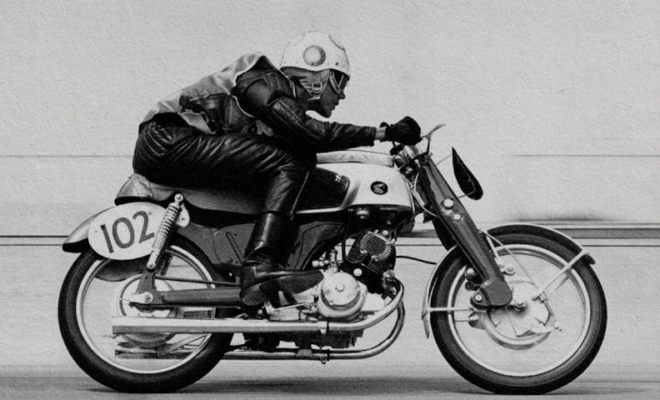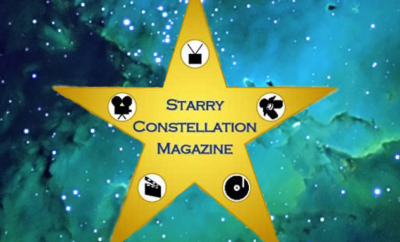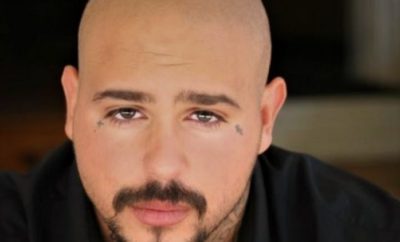 Breakwater Studios
Breakwater Studios
Interviews
Haley Watson – Motorcycle Mary
By: Jennifer Vintzileos
Q) How did you get into the filmmaking business?
A) The short answer is Craigslist. When I got into the film industry, I happened to be living in Eastern Washington state. I had some time between my sophomore and junior years of undergraduate. With some extra time during this year, I decided to volunteer. So, I went to the volunteer section of Craigslist, where I found a posting for a volunteer assistant to the producer position, on a narrative feature. Intrigued, I applied and got the position. Once on set, I instantly fell in love with filmmaking and began to pursue a career as a freelance filmmaker.
Q) What was it about Mary McGee’s story in Motorcycle Mary that inspired you to make your directorial debut?
A) When I was searching for a story, what really stood out to me beyond Mary’s laundry list of accomplishments was the fact that she had achieved so many things without fan fair. I was very curious about the mindset behind that kind of person. Something I have heard others say, is that they are surprised that the first woman to race motorcycles was not some rough, chain-smoking, tattooed, edgy character. Mary is very bubbly, kind and affable despite the challenges she faced. I quickly found how her positive nature was responsible for how many barriers she broke. A driving factor that made me want to make this film was the feeling that Mary’s accomplishments would finally be celebrated. Furthermore, Mary was an inspiration to me personally to have a positive outlook in the face of obstacles.
Q) During the filming process, what was one of the best moments of getting to listen to Mary McGee talk about her career in racing?
A) This is hard. The interview with Mary felt like it turned into a glorified hangout. Mary is an incredible storyteller and we’ve become friends over the course of the movie being made. I think one of the very sweet moments that is not in the film is when I asked Mary what her greatest accomplishments were, and she listed her relationships with friends and family. I had to then redirect the question to her racing career. Ultimately, it didn’t make the cut, but to me, it spoke so clearly to her mindset that is so deeply caring.
Q) Are there any moments during filming that you wish you could have included in the final cut but had to be cut for time?
A) MANY, truly, many, adrenaline junky, bone breaking, speed demon, trash talking (not from Mary) stories within the interview that were left on the floor. Mary’s career spans from 1957-1975 and vintage racing from 2000-2012. She raced cars, formula 2, motorcycles, motocross and the Baja series in cars and motorcycles. AND as a person that “never says no,” her life truly reflected someone that was ALWAYS down for an adventure. The Motorcycle Mary interview ended up being quite long because of the many colors that make up the events and stories within Mary’s life. I’ll tell you one…
In the film, Mary describes having to go to a tryout to become the first woman to race motorcycles. What was left on the cutting room floor, and what you don’t know is that this is essentially Mary’s first time on a bike EVER. You will see in many articles that she calls out a Triumph Tiger Cub as her first bike, which is true, BUT what you don’t know is that she really only rode the bike to her mailbox and back. So, when she tries out on the Honda CB-92R to be the first women to race motorcycles in the US, it’s essentially the first time she is riding a motorcycle, aside from trips on the Triumph to her mailbox. I know that she basically tops out the speed of the bike (a little over 100mph) – which to me, really solidified her racing talent and fearless nature. On top of that, Mary does not see this moment as scary, at all.
Q) Since its debut on June 7th, what has been the overall reaction from anyone who has had the chance to watch the film?
A) There has been an OVERWHELMING amount of praise around the film. The biggest testament to the positivity has been seeing Mary’s general health rapidly improve with the result of people reaching out to her, to share how meaningful her story meant to them. I am so happy that people love the film and Mary’s story. One of the highlights, to me, on the impact of the film was a story that one of the other directors in the Tribeca block. She explained that her eight-year-old daughter had used one of Mary’s race prep tactics that she explains in the film around “clearing your mind and just breathing.” This young girl was feeling anxious about taking a bus from New York to Pennsylvania, but she told herself to be like Mary McGee and “just breath.” I’m thrilled that young people might be able to see Mary as a role model.
Q) Your credits as a cinematographer are quite extensive! How did that experience help you as a director?
A) After that set in Eastern Washington I explained earlier, I started to pursue a career in the camera department and worked as a first assistant camera for many years. I then began working as a cinematographer, which at the time was my goal and to this day I really love creating the visual language of a film. Having been in the camera department for so many years, I feel extremely comfortable on set. I had a front-row seat to watching many good productions and many bad productions, all giving me good insight into what makes a successful film across commercial, narrative and documentary formats. Moreover, it made being able to “pull off” the production for Motorcycle Mary with only me, and the producer Rachel Greenwald. For the interview, I ran the camera, lighting and sound. I like to think I’m pretty ‘dangerous’ with a camera.
Q) What message do you hope viewers take away from watching Motorcycle Mary?
A) I hope that anyone can take away that it’s possible to find optimism in the face of adversity. In Mary’s case she faces sexism and loss of a family member, but she’s able to trust herself to navigate back to happiness. I hope that women are inspired that anything they set their mind to is possible and not to let anyone interfere with the pre-suit of their passions, especially those in male dominated spaces.
Q) You also had the chance to work on another film a few years back called The Queen of Basketball. Why do you believe it is important to place a spotlight on stories of women who break gender stereotypes?
A) Yes, and I found and pitched the story that became The Queen of Basketball. To me, there are so many female stories that we have yet to recognize. I want everyone to know that women have always been around doing incredible things. Lucy Harris was going to play basketball on the same team as Kareem Abdul-Jabbar, but she thought it was a joke. This makes me really upset, what if she was allowed the same privileges as her male counter parts? What if Mary was allotted the same privileges as her male peers? I hope bringing these stories to light makes more space for women in sports and beyond.
Q) In your career, what is the best advice you have gotten that you continue to use to this day?
A) “A director is not supposed to make sure they have the best idea in the room, a director is supposed to make sure there IS an idea in the room.” I received this advice from a professor in film school. In my filmmaking process I come up with a distinct plan for a film, but I enjoy working with collaborators that are open to hitting a few ideas back at me. The community of people that you surround yourself with when making a film really matters. It’s important to me to empower everyone working on a film to be able to do their best work and facilitate that work as best as possible.
Q) Aside from Motorcycle Mary, are there any upcoming projects that you can tell us about?
A) Yes… I have a few irons in the fire, none that I can speak on now, but…soon. Thank you.




You must be logged in to post a comment Login